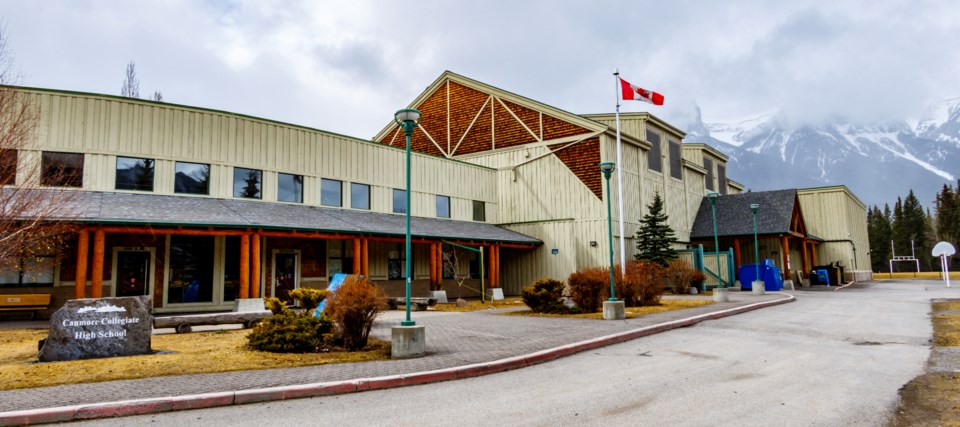CANMORE – Canadian Rockies Public Schools division received a passing grade when it came to academic performance and completion rates.
The 2021-22 annual education results showed the three- and five-year completion rates are continuing their upward trend.
“In a word, especially given the pandemic, they are excellent,” said Dennis Parsons, an educational consultant at the board’s Jan. 25 meeting. “They have been on an upward trend for multiple years.”
Parsons, along with Violet Parsons-Pack, CRPS’ now retired deputy superintendent of learning and innovation and an educational consultant, provided the annual education results to the board. During the 2021-22 school year, CRPS exceeded the province on all completion rate measures, which coincided with challenges due to the COVID-19 pandemic on schools across the province.
“I want to mention that the First Nation, Inuit and Métis results for three-year and five-year completion also exceeded the province,” Parsons said.
In the three-year competition results, that demographic achieved 87.5 per cent completion versus the province at 78 per cent. For five-year completion, it was 88.4 per cent, compared to 86 per cent of the province.
“By all measures, CRPS should justifiably feel very proud,” Parsons said.
In both acceptable standards and standard of excellence in diploma exam courses, CRPS students were significantly above the provincial results. Students in CRPS outperformed their counterparts on seven of nine exams at both the acceptable level and the standard of excellence level.
Parsons said the vast majority reported they had many opportunities to engage in real world learning. CRPS has increased the offering of its experiential and applied learning opportunities for students over the past few years.
Overall satisfaction at the school continues its upward trend related to the quality of education.
“There was a little dip last year, but we are confident based on the results that were there and the trend that was in place, that upward trajectory will return when we return to pre-pandemic norms,” said Parsons-Pack.
The majority of staff – 81 per cent – said they agreed having access to professional learning resources to support positive mental health through CRPS and its partners was a benefit.
One area highlighted for improvement was the decline in Grade 9 students who achieved an acceptable level on their 2021-22 PATs compared to their performance in Grade 6 on the 2018-19 tests.
“The pandemic did have an impact on the percentage of students achieving the acceptable and the excellence level,” said Parsons-Pack.
While the decline isn’t great, the extent of the decline was less than that of the province in all areas except French immersion language arts.
“Even though there was a negative impact on the students achieving the second level, we still outperformed the province,” Parsons-Pack said. “The teachers and the parents who did so much with the online learning, have to be commended for their efforts and dedication.”
The same cohort of students experienced an increase in the percentage of achieving a level of excellence in all subject areas, while the province experienced a decline in all areas except math.
“CPRS students, parents and staff have to be commended for the efforts and action they undertook to help ameliorate the adverse impacts of the global pandemic,” Parsons said.
Based on the report, CRPS will now look at three priorities moving forward with the district. The first priority will be to expand collaborative problem solving, create inclusive learning environments, maintain a strong focus on health and wellness and ensure students are supported through a school advocate.
The second priority will be to focus on real world problems and hands-on learning, while the third priority will be to focus on supporting the learning needs of Indigenous, Métis and Inuit children, and continue to promote and support the involvement of parents in decision-making.
“Now that we looked at these results, these will be used to look at the four-year plan and whether or not any tweaks need to be made to it,” Parsons-Pack said.




